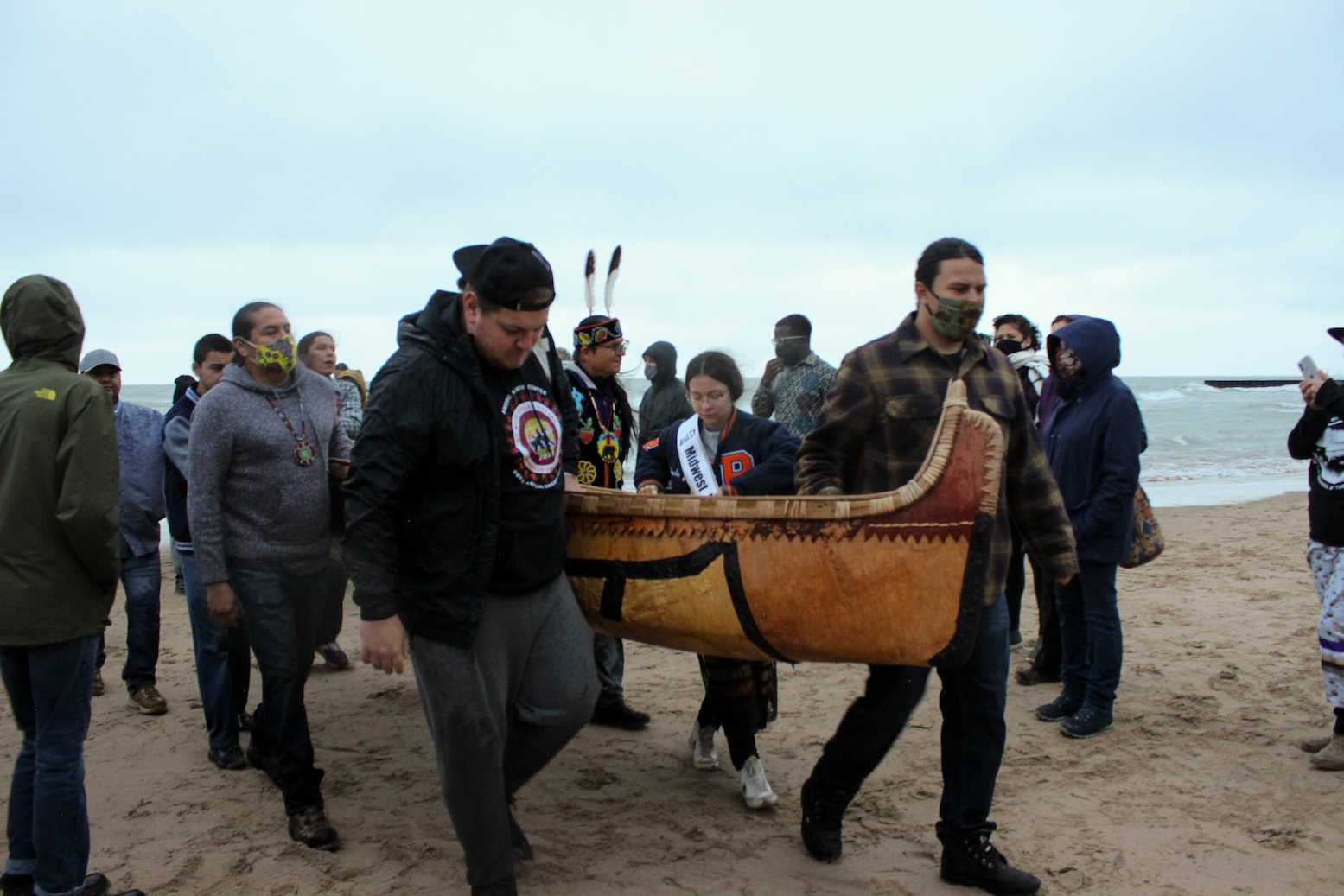Birchbark canoe building persists despite history of colonial erasure
Despite history of cultural erasure, the movement to revitalize Ojibwe values and traditions continues through canoe building
by Yunkyo Moon-Kim

The birchbark canoe, a significant part of Ojibwe history, has experienced centuries of cultural erasure. Artists like Valliere are revitalizing the tradition.
Speaking to the number of master canoe builders who are Ojibwe in North America, Valliere said it was “a scary amount.”
“It’s a culture that went very dim in Anishinaabe country, almost to the point it went out,” Valliere said.
The Anishinaabe birchbark canoe can be traced back thousands of years, although recorded history about the exact origin may not be readily available. The characteristics of the canoes enabled swift transportation across the Great Lakes, a region that surpasses 94,000 square miles.
Using the birchbark canoe, the Anishinaabeg traveled long distances to reach hunting and fishing grounds. Furthermore, starting in the 17th century, European traders started using birchbark canoes to establish trade routes and transport fur and other goods.
The lightness of the birchbark added to the usage of the canoes for transportation, Valliere said. For example, the boats he has helped make have ranged from around 68 to 125 pounds, he said.
The availability of materials in nature also made it easier to repair the canoes. However, because of colonization and industrialized deforestation following the Treaty of Chicago, this started to change.
Tim Frandy, a Sámi American scholar who has collaborated with Valliere for around a decade , said that putting forests under white management directly impacted the availability of material essential to build and maintain the canoes.
“Imposition of Western forest management is an act of forced assimilation,” the professor of folk studies at Western Kentucky University said.
Furthermore, assimilation in other forms such as boarding schools separated Ojibwe families, forbidding the continued use of language and culture. This, along with displacement and other harmful colonial policies, caused the loss of knowledge transmission between generations that has impacts that continue to the present.
Ogiimaa, Valliere’s language apprentice and Potawatomi member, recounted how he became involved with canoe building. Because Ogiimaa was put in a foster home and taken from his family, he said, he did not know who he was.
“I talked to [Valliere] about stuff that happened to me,” Ogiimaa said. “That's like, somewhat of the same things my ancestors went through.”
Frandy, who nominated Valliere for a National Endowment for the Arts National Heritage Fellowship, said that canoe building may be experiencing a modest revitalization. It’s important to understand the transmission of canoe-building knowledge as a way to continue the values of reciprocity and mutual respect, Frandy added.
“If people understand the good traditional arts can do in Indigenous communities, it’s going to make a big difference in the actual lives of real people in terms of environment, health, education, and wellbeing,” Frandy said. “It’s essential for the securing of Native futures to practice the culture and continue to think through the culture in a traditional way."
There has certainly been a concerted effort to pass on the knowledge of canoe building and kinship to younger generations. In 2015, Valliere partnered with the University of Wisconsin-Madison in a project that engaged eighth-grade students at Lac du Flambeau Public School to harvest materials and help with the construction of a canoe. The restoration of the canoe tradition was celebrated by the wider Lac du Flambeau community.
Again at a university setting, Valliere said he felt welcomed by the community within Northwestern. He looks forward to continuing customs and cultural practices, Valliere added.
“When I see that that canoe going into Lake Michigan, it's proving we're back home and we haven't gone anywhere,” Valliere said.
Back to articles